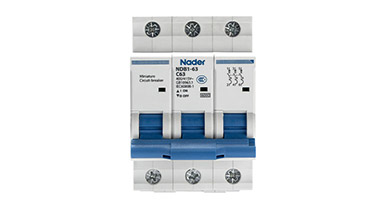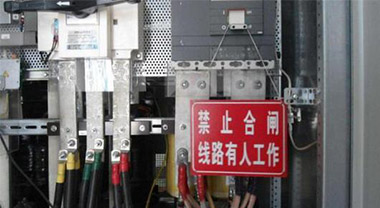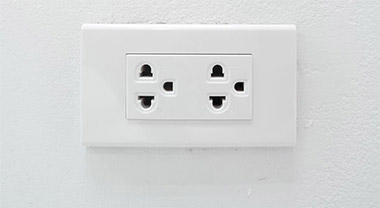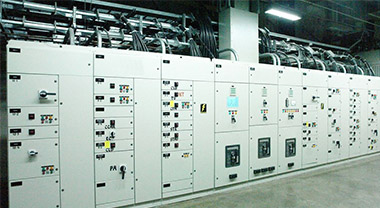Operation principle of SF6 circuit breaker
The SF6 circuit breaker adopts a self-energizing arc extinguishing structure, which mainly uses the high-pressure thermal expansion airflow in the pressure cylinder and the blocking effect of the hitting arc to increase the gas pressure in the high-pressure cylinder at the opening of the circuit breaker. The operation of SF6 circuit breaker is divided into two types: one is opening operation; the other is closing operation. The following is an introduction to these two operations.
(1) Opening operation. The opening operation of the SF6 circuit breaker is to control the inner arm of the support by the spring operating mechanism to pull the insulating pull rod to make the nozzle downward, and then to generate a certain arc through the separation of the main contact and the static contact. These arcs pass Combustion will produce a relatively high temperature, and then will produce high-pressure gas. When the high-pressure gas flows into the pressure cylinder, the pressure in the pressure cylinder will be increased. The high pressure gas in the pressure cylinder can be ejected from the throat of the moving arc contact, thereby extinguishing Arc, to achieve the purpose of short circuit.
(2) Closing operation. The closing operation of the sulfur hexafluoride circuit breaker is to control the inner arm of the support by the spring operating mechanism to pull the insulating rod to move the nozzle upward, so that the closed state is reached, and then the sulfur hexafluoride gas enters the pressure cylinder. Inside, waiting for the next SF6 circuit breaker operation.
The sulfur hexafluoride circuit breaker is mainly composed of six parts, including: the conductive part of the sulfur hexafluoride circuit breaker, the arc extinguishing unit of the sulfur hexafluoride circuit breaker, the insulating part of the sulfur hexafluoride circuit breaker, and the hexafluoride circuit breaker. The auxiliary connecting device of the sulfur circuit breaker and the electrical control and operating structure of the sulfur hexafluoride circuit breaker. According to the structure and composition of sulfur hexafluoride circuit breakers, sulfur hexafluoride circuit breakers can be divided into two types of circuit breakers: one is a tank type high voltage sulfur hexafluoride circuit breaker; the other is a ceramic column type sulfur hexafluoride circuit breaker. Device.
The two types of SF6 circuit breakers have their own characteristics and operation methods. Among them, the tank type high voltage SF6 circuit breaker can be combined with isolating switches, circuit breakers, etc., to form an open combination electrical appliance, which can reduce the Land area, while reducing maintenance time, such SF6 circuit breakers are very suitable for use in Xinjiang, because the tank-type high voltage SF6 circuit breakers are particularly adaptable to the environment, and the natural environment in Xinjiang is relatively harsh , The general SF6 circuit breaker is very prone to failure in actual use, while the tank type high voltage SF6 circuit breaker rarely fails when used in Xinjiang, which ensures the safety of Xinjiang power. However, the porcelain column type sulphur hexafluoride circuit breaker also has certain advantages. The installation process of the porcelain column type sulphur hexafluoride circuit breaker is relatively simple and can also save economic costs to a certain extent, but the porcelain column type sulphur hexafluoride circuit breaker Its seismic performance is not very strong, and the center of gravity is relatively low, which will cause the ceramic pillar type sulfur hexafluoride circuit breaker to be used only in some areas, so this type of sulfur hexafluoride circuit breaker will not be used in Xinjiang.




